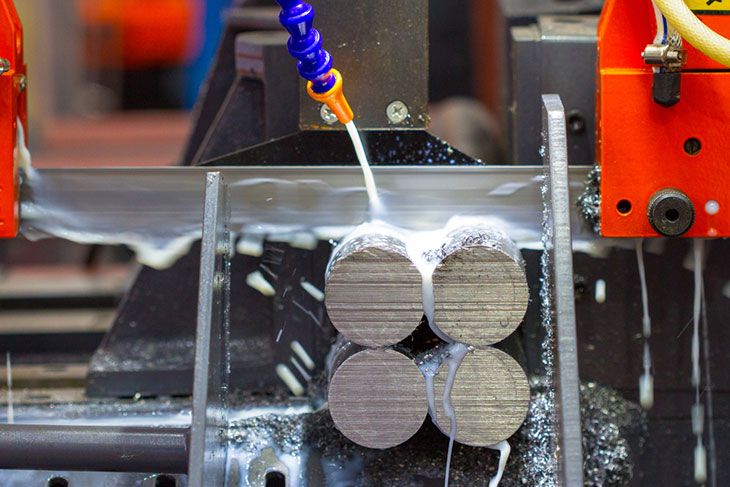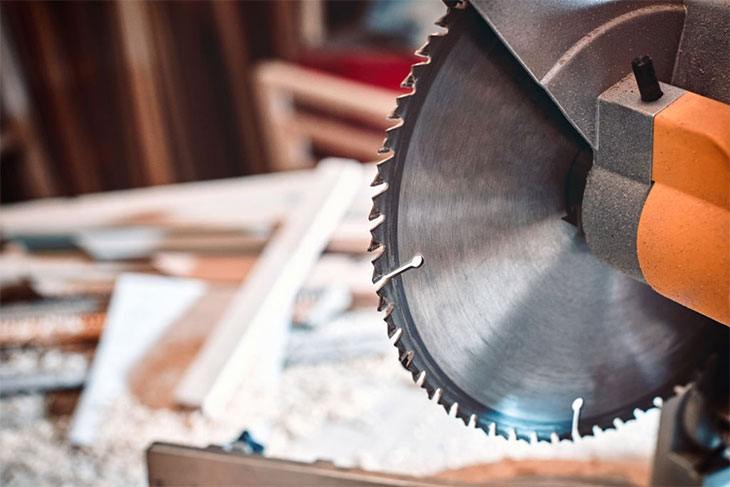If you’re serious about becoming a carpenter that knows his way around the workshop, it’s vital to master all the tools that the trade requires.
Of course, you’ll start with the basic hand tools, but there comes a time when you have to branch out and learn more about the professional-grade machines and devices that make the distinction between a beginner and a pro.
That’s why we want to tell you more about a bandsaw.
This article will cover several topics regarding bandsaws - what they are, their use, and most importantly, how to use a bandsaw.
Don’t get demoralized because it’s not that a complicated process; all it takes is a bit of practice and time to master it.
Without further ado, let’s dive into the specifics!
More...
What are bandsaws - A brief overview

If you’ve made it to this article, it means that you’re at least briefly acquainted with the concept of a bandsaw and how it functions.
However, even if you know something, it doesn’t hurt to learn more about the inner workings of this machine and knowing exactly how the magic is made.
Bandsaws are essentially powers saws with two large housings that store wheels.
The wheels are continuously turning while the machine is active, and they’re rotating a circular blade that goes directly through the table and allows for fast and accurate cuts.
The way you can determine if a bandsaw is good or not is by analyzing a couple of factors.
Firstly, the speed and the motor power that feeds the blade are crucial in choosing a bandsaw.
When it comes to speed, the answer is quite intuitive - the faster it rotates, the more precise your cuts will be.
As for the motor power, the answer is a bit more intricate since there are different methods of cutting that require different power requirements.
For example, resawing should be done with a wider blade at slower speeds, which in turn decreases the motor power.
How to use a bandsaw - Easy steps to master
1. Preparation
Before starting any project, whether it’s related to woodworking or a simple painting job, you have to be prepared.
That requires you to go over all the essential equipment, safety regulations, and of course, the thought process behind it all.
For the sole purpose of this article, we’ll assume you’ll be cutting a wooden object, but we’ll also add a couple of tips and tricks regarding metalworking.
The first thing you’ll have to do is set the blade in place and adjust the tension.
Placing the blade awfully resembles rolling the tapes for old video cassettes.
You’ll release the tensioner and loop the blade by placing it onto the lower wheel in the housing and then manually rotate it until it’s completely looped and connected with the upper wheel.
Of course, you’ll have to choose the right blade beforehand.
Knowing what blade to use for a specific project is based on the stock you’re cutting, and the type of cutting you’ll do.
For example, if you plan on resawing, you’ll need a wider blade that’s close to 3/4-1” or even a 1-inch wide blade.
On the other hand, standard curved cuts will require you to use the thinnest possible blade to maximize the radius of the cut, so we recommend you go for the 1/4-1” blade.
Then you’ll have to readjust the tension to fit the material and demands of the project that you’re working on.
The tension you set is based on the machine and the blade’s width in accordance with the thickness of the wood you’re cutting.
All the ratios will be in the manufacturer’s guide, so you won’t have to do any research on your part.
Once you’ve finished preparing the blade, it’s time to set the stock onto the work surface and adjust the blade guard and the ball guide bearings.
Ball bearings are located directly on the lower end of the guard, and they serve to control the movement of the blade, laterally and backward moves.
They are a safety measure that fixates the blade, so there’s no flex during the cutting process.
When it comes to the blade guard, you should know that adjusting the height is dependent on the thickness of the stock.
In other words, you’ll set it just above the top end of the stock to give it a bit of breathing room, but not enough to allow for the ball bearing to touch it so they can move freely.
Once you’ve set the height, you’ll lock it into the position and move on to the cutting process.
Moreover, most benchtop and resawing bandsaws come with a rip fence that essentially allows you to stabilize the stock and rebalance it for straight cutting.
Inversely, you’ll use a miter gauge to help you with angled cuts.
Now that we’ve gone over the essentials, it’s time to boot up the machine and start cutting!
2. The cutting process

Whatever you’re cutting and whatever your project might be, the process itself will boil down to two things - whether you’re doing straight or curved cuts.
Therefore, we’ll split this segment into two parts and show you how to perform both of these actions.
We’ll start with the straight cuts.
Knowing how to make straight cuts is not that hard to master with some practise, as you’ll most probably have a rip fence that’ll guide you through the process.
However, there are tips you should know before you venture away.
Firstly, it’s important that you don’t make the initial contact of the stock with the blade before the machine is active for two reasons - if the contact point has a knot, the blade will stick through it immediately and could potentially get stuck inside it.
Secondly, the smoother you go through the blade, the less dust and mess will be left behind.
So, after you’ve booted the machine, you’ll slowly push the stock against the blade by following the incision lines that you’ve previously drawn on the stock.
It’s vital to go slow because the edges will be less rough, and you won’t have to sand the final product that much to make it look decent.
There are main ways of achieving a straight cut - you can either use a rip fence, or you can cut it by eye if you’re experienced enough.
If you’re a beginner, we recommend you use a fence since it’s much safer, and it’ll help you to get a feel of the bandsaw in the long run.
As you’re pushing the stock against the blade, you should be aware of the fact that the blade sticks through the table, and there’s a low danger of cutting yourself since you’ll be able to see the exact pathing of the blade.
However, once you’re about three-quarters done, pushing the final piece of the stock can be tricky in safety terms.
The standard way of finishing it is by grabbing the upper part of the stock that’s already been cut and pushing it away from you.
Still, if you’re not that experienced, you might experience some blade drifting, which is a term for losing the straight path of the blade due to a shift in either position of the blade or the rip fence.
In this instance, we would recommend you to use a push stick as a safety measure, which is excellent for beginners.
When it comes to curved cutting, the process is relatively the same, and there’s no difference in the preparation you’ll have to do.
However, there are some tips that’ll help you along the way.
For example, drawing the cutting lines is necessary, but you don’t always have to cut directly over them.
Cutting outside the lines is excellent for beginners since it enables them to see if they’re following the path correctly, and the leftovers can be easily sanded afterwards.
On the other hand, cutting inside the incision lines will be harder to fix, so keep that in mind.
Also, a good idea is to make straight, relief cuts that fall away when you make the curved cuts.
They’ll help you keep everything steady, and you’ll also be able to take breaks if it becomes too tiring.
Final Thoughts
You’ve probably heard that preparation is everything, whatever it is that you’re doing, and the same goes for wood cutting.
The sole process of cutting is not that complicated, as evident from this article, and it’s a thing that you’ll easily master over time.
However, it’s important to never forget any segment from the preparation since it’s the most crucial part of woodworking.
If you do make a mistake, you’ll have to start over again!
Now that you’ve read this article, we hope that you’re equipped enough to tackle any woodworking project with ease.
Bear in mind that this is a beginner’s guide, but we’ll include a more professional guide in the future when you’re ready to tackle some harder and more demanding projects.
Thank you for reading and investing in your carpenter career.
